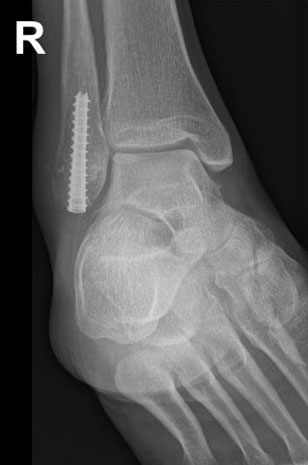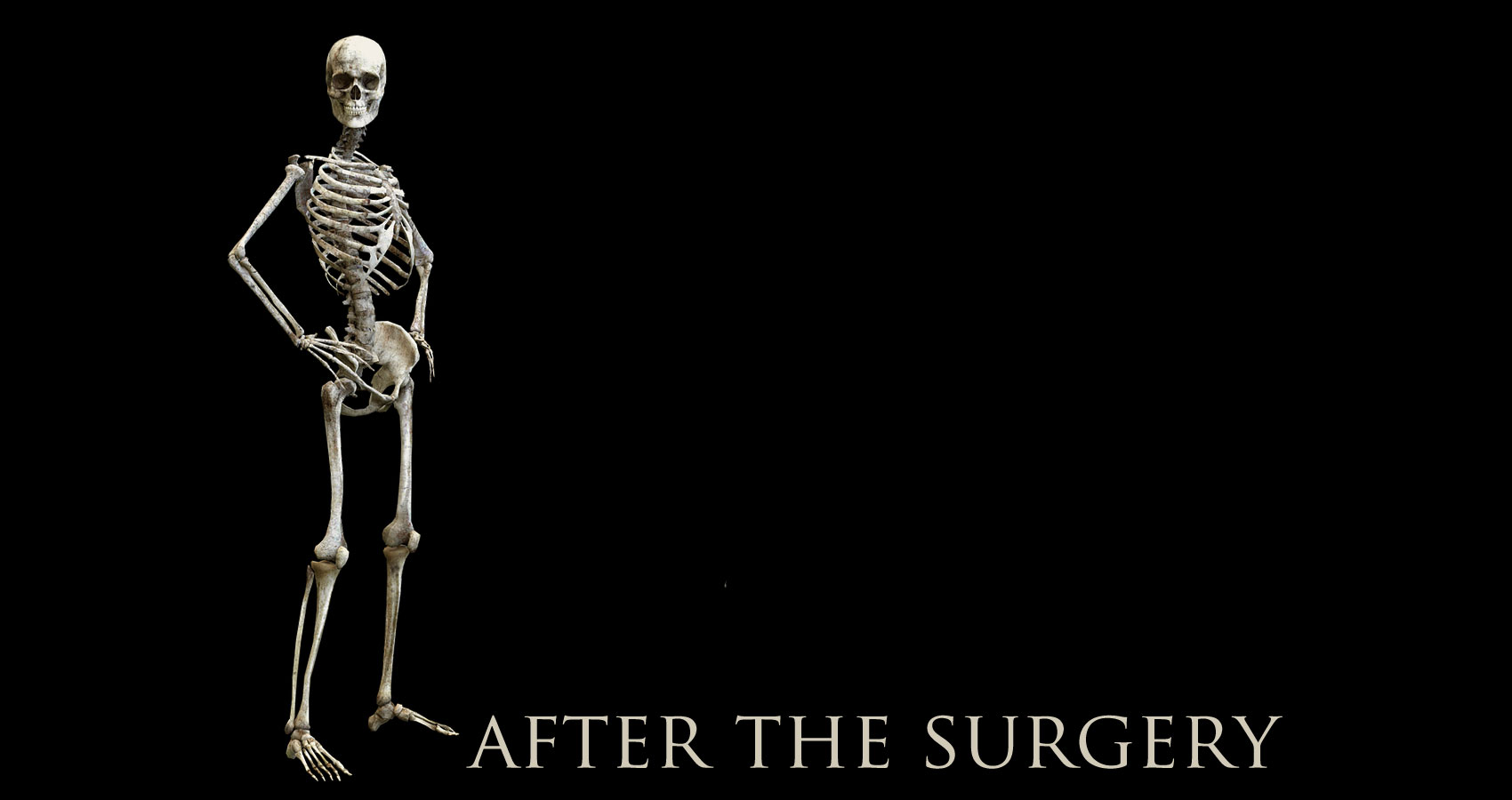On breaking a leg during a pandemic:
Reflections of a doctor-turned-patient
Part III – After The Surgery
written by: Asad Mian
@amian74
 By the time I got home after my day surgery, it was already midafternoon. I parked myself into my guest room downstairs as even the thought of hopping up the staircase to my bedroom on the first floor was too daunting.
By the time I got home after my day surgery, it was already midafternoon. I parked myself into my guest room downstairs as even the thought of hopping up the staircase to my bedroom on the first floor was too daunting.
The rest of the afternoon and evening went fine because my right ankle had been numbed so well for the surgery that I didn’t feel much pain. There was a deep dull throbbing sensation periodically that would ease on repositioning my foot. I lay in bed with my right leg elevated, and fell asleep that way for a few hours.
When I woke up I acclimated to my new room and bed. I watched TV for a bit. I had a cup of tea and some snacks, and dinner soon after. The novelty of being in a new space in my own house made me forget the important discharge instructions and medications that the orthopods had sent me home on.
Although my well-bandaged ankle felt cushioned and secured, the diverse pain sensations that I started feeling the moment the ankle nerve block wore out went from alpha to omega within seconds. Some parts of my foot felt like they were on fire, other parts started tingling, the side of the ankle where the stitches were located felt like it was being stretched. For the readers who are healthcare-related, you may recall from your medical, nursing or allied health education, the importance of describing precisely not just the position and intensity of pain felt by the patient, but also its quality. For instance, is it piercing, stabbing, throbbing, burning, etc.? Mine was all the above and more.
No matter what position I would place my right foot in, there was absolutely no relief. I quickly popped one tablet of the narcotic tramadol, and two of the anti-inflammatory naproxen. I threw into that cocktail a tablet of melatonin to help me sleep, thinking that would be one way for me to forget the misery.
However, in spite of practicing polypharmacy, I was fated to suffer that pain. I tossed and turned writhing in agony, tried deep breathing to help distract myself, moaned, groaned, and even cried to vent my pent up emotional and physical pain and frustration. I wanted to feel sorry for myself. And I did. I wanted to make myself vulnerable to myself. And I did.
Although that ‘post-operative night zero’ (per surgical nomenclature) was hell, for the most part, I likely passed out from the pain at some point because I recall waking up with an intense urge to pee. It was early morning and the pain had lessened by then. The rest of that day after surgery I ensured that I continued taking my pain meds in a scheduled manner round the clock. That was the only way to control the pain cycle enough so that I didn’t have to worry about any breakthrough pain requiring additional dosages of medications. The next two to three postoperative days and nights were spent in reaching an equilibrium of sorts: whereby my pain could be overcome if not transcended entirely, by a combination of pharmaceutical and non-pharmaceutical (distraction through deep breathing, music, Netflix, writing, art, etc.) means.
In my quest to focus more on the pharmaceutical side of things for the initial post-surgical period, however, I forgot the impact that recurrent narcotic usage can have on gut mobility. By the time I realized that I hadn’t had a bowel movement in almost five days. The struggle to cleanse one’s constipated bowels in the backdrop of likely very therapeutic levels of narcotics in one’s bloodstream is a story for another day. That one hour spent on the toilet ravaged by intense bouts of abdominal cramping and colicky pain was enough to make me forget my ankle pain.
Over the course of those first few days right after the surgery, there were other realizations too. For instance, things that one takes for granted, like taking a bath, become so tricky when you are one-legged.
But when your partner and spouse of over twenty years is there in the bathroom with you to help you shower safely, then you feel blessed for bearing witness to such a dynamic.
The most important aspect of the subsequent post-operative days was the periods of intense reflection especially about my instantaneous transition from high mobility as an adaptation in the lockdown to complete immobility. I was at a loss to explain how I managed to injure myself to the extent that I needed surgical intervention.
How long will I have to go through rehabilitation to start walking again? I wondered, knowing well that running and doing Zumba were not short term options anyway.
Would I ever get to normal again? I asked myself rhetorically, knowing well that the COVID-19 pandemic had already changed the concept of normalcy for everyone the world over.
Then there were periods of intense guilt for not being with my ER team at the frontline of these stressful pandemic times when all hands (and feet) were needed on deck. Guilt for going on medical/surgical leave when there was so much work to be done.
Needless to say, I’m not out of the woods as yet. I still haven’t been to the orthopods for post-surgical follow up, at which point my stitches shall be removed, and I shall be assessed for the resumption of weight-bearing.
However, I’m getting better in managing my emotions; being in the here and now, taking one day at a time, empathizing with myself, and just being okay with any and all outcomes.
CONCLUSION
The sequence of events in my aforementioned story may be summed up as follows:
Going insane in the COVID-19 pandemic->Need to resort to exercise and Zumba (to regain sanity)->Go break a leg->Get bio-hacked (surgically-mediated insertion of hardware in the leg)->To be determined
Per that chain, things seemed to have occurred linearly and the outcome was predictable based on that linearity. That is likely just narrative fallacy, that is, my mind gravitates to a simplistic cause and effect model, when in fact there is immense complexity and intricate interactions of variables.
Even if the sequence was completely unpredictable and random, sometimes all it takes is that single moment to turn your life awry. It gets you to rethink and recalibrate your life, especially given these chaotic pandemic times.
I don’t know if I can consider my recent accident and the doctor-turned-patient transition as such a turning point for me to become a patient advocate per se. But it has certainly given me much room to reflect.
During this broken leg crisis, made harder by the COVID-19-mediated lockdown crisis, my family, friends, and colleagues have been superb pillars of strength.
They help me understand that in the final analysis the thing that is of real value – what heals – is love.
- Luna v. Macavity - April 8, 2023
- Insomniac’s Dream – Wonderland - December 28, 2021
- Insomniac’s Dream – Communion - October 5, 2021



